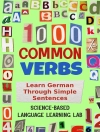In
Resource Teachers, Dr. Jennifer Katz describes the fundamental shift in the role of the resource teacher in the inclusive classroom (outlined in her previous book,
Teaching to Diversity). Dr. Katz discusses practical and innovative ways to partner with classroom teachers to create inclusive learning communities – by co-planning, co-teaching, and co-assessing instruction – with less emphasis on traditional practices of pull-out remediation, IEPs, and modified programming.
قائمة المحتويات
Table of Contents
- Acknowledgments ix
- Section One: Introduction xi
- Chapter 1: The Three-Block Model of Universal Design for Learning 1
- Chapter 2: What We Mean by “Inclusive” 9
- Social Inclusion and Social Exclusion 11
- Social Inclusion of Students with Exceptionalities 11
- Social Inclusion of FNMI Students 12
- Academic Inclusion and Academic Exclusion 15
- Canada and UNESCO’s Goal of Education for All 16
- Interactive Inclusion 17
- Social Inclusion and Social Exclusion 11
- Section Two: Resource Teacher as Educational Leader and Collaborator 19
- Chapter 3: Response to Intervention in Universal Design for Learning 21
- A Tiered System of Interventions 22
- RTI Tier 1 22
- RTI Tier 2 23
- RTI Tier 3 24
- Role of the Resource Teacher in RTI24
- A Tiered System of Interventions 22
- Chapter 4: Tier 1 — Supporting Inclusive Instructional Practice 27
- Disability and Disabling Environments 28
- Collaborative Practice29
- Co-Teaching 31
- Working with Educational Assistants 33
- Chapter 5: Ecobehavioural Assessment in Tier 1 and Tier 2 35
- Universal Design for Learning 36
- Mental Models: Assessment Frameworks 39
- Multiple Intelligences 40
- Neurodevelopmental Constructs 40
- Ecobehavioural Assessment in a UDL Context 48
- Section Three: Individualized Assessment for Tier 2 and Tier 3 Supports 55
- Chapter 6: Types of Individual Assessment in Tier 2 and Tier 3 57
- Categories of Funding Models 57
- Types of Assessment 58
- Three Levels of Assessment 58
- Assessments for Education Grouped into Four Subtypes 60
- How Test Scores Are Measured and Reported 61
- Blending the Traditional and RTI Models 62
- Categories of Funding Models 57
- Chapter 7: Gathering Information and Building Learning Profiles 65
- File Reviews and Work Samples: The Process 67
- Step 1: File Summaries 67
- Step 2: Portfolio Analysis 67
- Developing Assessment Plans 70
- Assessments Based on Curriculum 74
- File Reviews and Work Samples: The Process 67
- Chapter 8: Gathering Information for Levels A and B Assessments 79
- Conducting Assessments 79
- Beginning an Assessment 80
- During the Administration 84
- After Completing the Assessments 84
- Scoring Level B Tests 84
- Analyzing and Interpreting Results 86
- Debriefing Assessments 93
- Conducting Assessments 79
- Chapter 9: Functional Behaviour Assessment and Building Behaviour Profiles 95
- Types of Behaviour 98
- Neurological Underpinnings of Behaviour 99
- Human Needs and Behaviour 102
- Tier 1 and Tier 2 Supports 103
- Functional Behaviour Assessment 104
- Conducting a Functional Behaviour Assessment 105
- Types of Behaviour 98
- Section Four: Individualized Programming for Tier 2 and Tier 3 Supports 109
- Chapter 10: From Assessment to Programming a Universally Designed IEP 111
- IEP Planning Teams 111
- Individual Education Plans 112
- Chapter 11: Diagnosis and Funding Categories 121
- Applying Scores to Assessment of Learning Disabilities 122
- Interpreting Assessments 123
- Diagnosis and Family Acceptance 124
- Debriefing Families about Diagnostic Testing 125
- Funding Based on Diagnostic Labels126
- Chapter 12: Including Students with Mild to Moderate Disabilities 129
- Intensive Skill Interventions 130
- Reading Interventions 132
- Writing Interventions 139
- Numeracy Interventions 139
- Emotional and Behavioural Interventions 140
- Conclusion 141
- Chapter 13: Including Students with Significant Disabilities 143
- Modified Programs and UDL 143
- Supporting Academic Inclusion147
- Cognitive Skills 149
- Self-Help and Life Skills 151
- Literacy and Numeracy 151
- Creating Visual Scripts and Social Stories 153
- Challenging Behaviour 155
- Conclusion 156
- Chapter 14: Including Students Who Are Gifted 157
- Gifted Education — A Field Divided157
- Identification and Educational Outcomes 160
- Emerging Conception of Giftedness 160
- Tier 1 and the Student Who Is Gifted 161
- Tier 2 and the Student Who Is Gifted 162
- Analyzing Gifted Portfolios 164
- Demystifying Students Who Are Gifted 164
- UDL and Students Who Are Gifted 165
- Conclusion 167
- Gifted Education — A Field Divided157
- References 169
- Provincial Documents 173
- Test Instruments 174
- Appendix A 177
- A.1 Guess the Covered Word 178
- A.2 Click and Clunk Card 179
- A.3 VAKT 180
- Appendix B 181
- B.1 Student Survey 182
- B.2 Teacher Survey 184
- B.3 Parent Survey 186
عن المؤلف
Jennifer Katz, Ph D, taught for 16 years in diverse classrooms from K to 12, including special education and inclusive classrooms in Winnipeg and Vancouver. She has also served as a resource teacher and counsellor. Her work as an advocate of inclusive education has spanned several countries, provinces, and territories, and multiple audiences, including students, parents, teachers, educational leaders, and curriculum and policy development ministries. Dr. Katz received the MCEC Outstanding Achievement Award for Leadership, 2016. She now serves as an Assistant Professor of Inclusive Education at the University of British Columbia.











